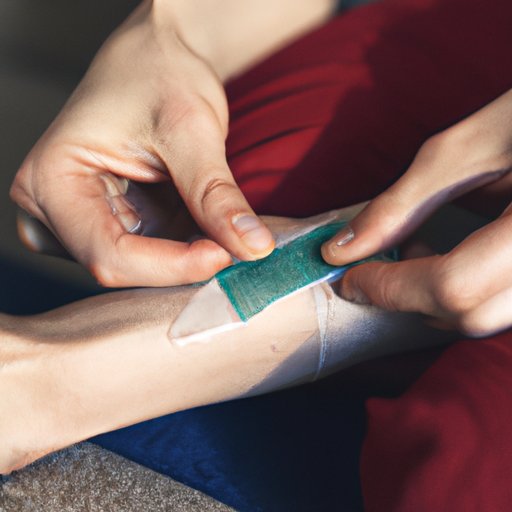
Introduction
When you get a cut or a scrape, it’s important to know how to properly care for the wound. One consideration is whether or not the wound requires stitches. Knowing when to get stitches can be challenging, but it’s essential to ensure proper healing and prevent infection. In this article, we’ll explore how to tell if you need stitches, the benefits of getting stitches, and alternative treatment options.
Signs that Indicate the Need for Stitches
There are several symptoms that suggest a wound requires stitches. If your wound is deep and won’t stop bleeding, if it has jagged edges that won’t stay together, if it’s more than half an inch long, or if it’s located on the face, hands, or feet, you may need stitches. Another way to tell if a wound is deep enough to need stitches is to see if you can see fat or muscle inside the wound.
When to Seek Medical Attention for a Wound
If you don’t get a wound that requires stitches treated properly, there can be a risk of complications such as excessive bleeding, infection, or even nerve damage. If you have experienced a wound that fits the above criteria, it’s necessary to seek medical attention. Also, if you’re showing signs of an infection, such as redness, heat, or oozing, it’s important to see a doctor. Lastly, if you have any underlying conditions that could affect healing, such as diabetes or a weakened immune system, it’s important to seek medical attention.
Steps to Take If You Think You Need Stitches
If you believe you need stitches, the first thing to do is to clean the wound thoroughly. You can do this by holding the wound under running water and washing gently with soap and water. After cleaning, it’s important to apply an antibacterial ointment and cover the wound with a sterile bandage. Then, it’s time to seek medical attention, either by calling your doctor or going to the emergency room. If the wound is serious or you’re experiencing severe bleeding, call 911 instead.
The Benefits of Getting Stitches
Getting stitches can help limit scarring and reduce the risk of infection. Stitches also help promote faster healing, as they hold the skin together and prevent the wound from reopening. Additionally, getting stitches can reduce the risk of complications such as nerve or muscle damage.
Alternative Options to Stitches
There are several alternative treatments for wounds that don’t require stitches, such as butterfly bandages or steri-strips. These options can hold the skin together and promote healing, but they’re typically only effective for smaller wounds or surface-level cuts. While these alternatives can be helpful in some instances, it’s important to seek medical attention if you’re unsure.
Common Mistakes to Avoid When Seeking Stitches
One common mistake people make when seeking stitches is waiting too long to seek medical attention. If a wound isn’t treated promptly, it can become infected or reopen, leading to complications. Another mistake is using home remedies instead of seeking medical attention. While remedies such as super glue or duct tape may seem like a quick fix, they can actually cause more harm than good.
Understanding Wound Healing
Wound healing is a complex process that can vary depending on several factors, such as age and overall health status. Typically, wounds go through several stages of healing, including inflammation, proliferation, and remodeling. The need for stitches can depend on which stage the wound is in and how well it’s healing. If you have any concerns about wound healing, it’s important to seek medical attention.
Conclusion
Knowing when to get stitches for a wound is an essential part of proper wound care. If you believe you need stitches, it’s important to seek medical attention promptly to prevent complications and promote proper healing. Additionally, keeping the wound clean and using proper bandaging techniques can help prevent infection and aid in healing. If you have any questions or concerns about wound care, speak with your doctor.





